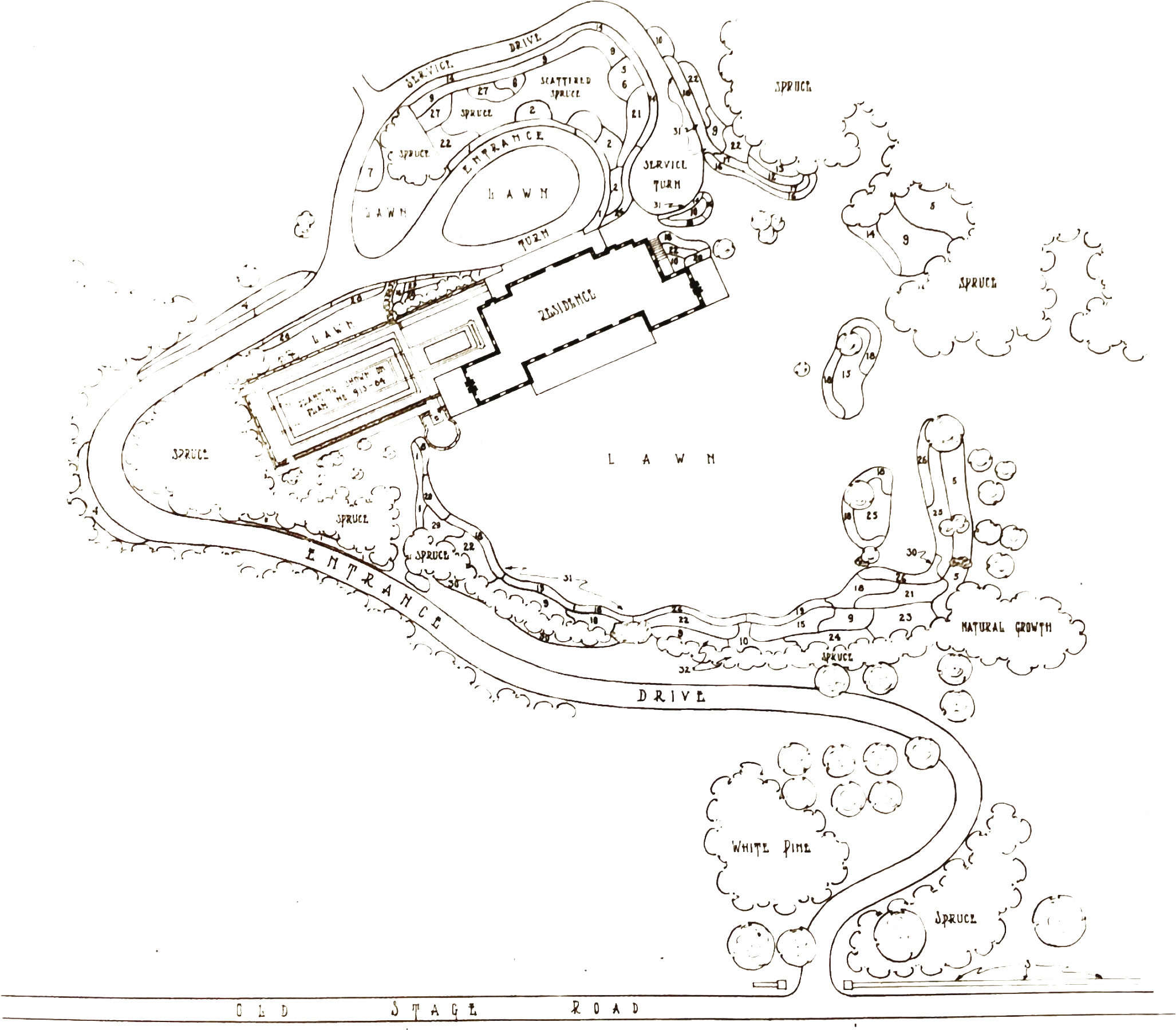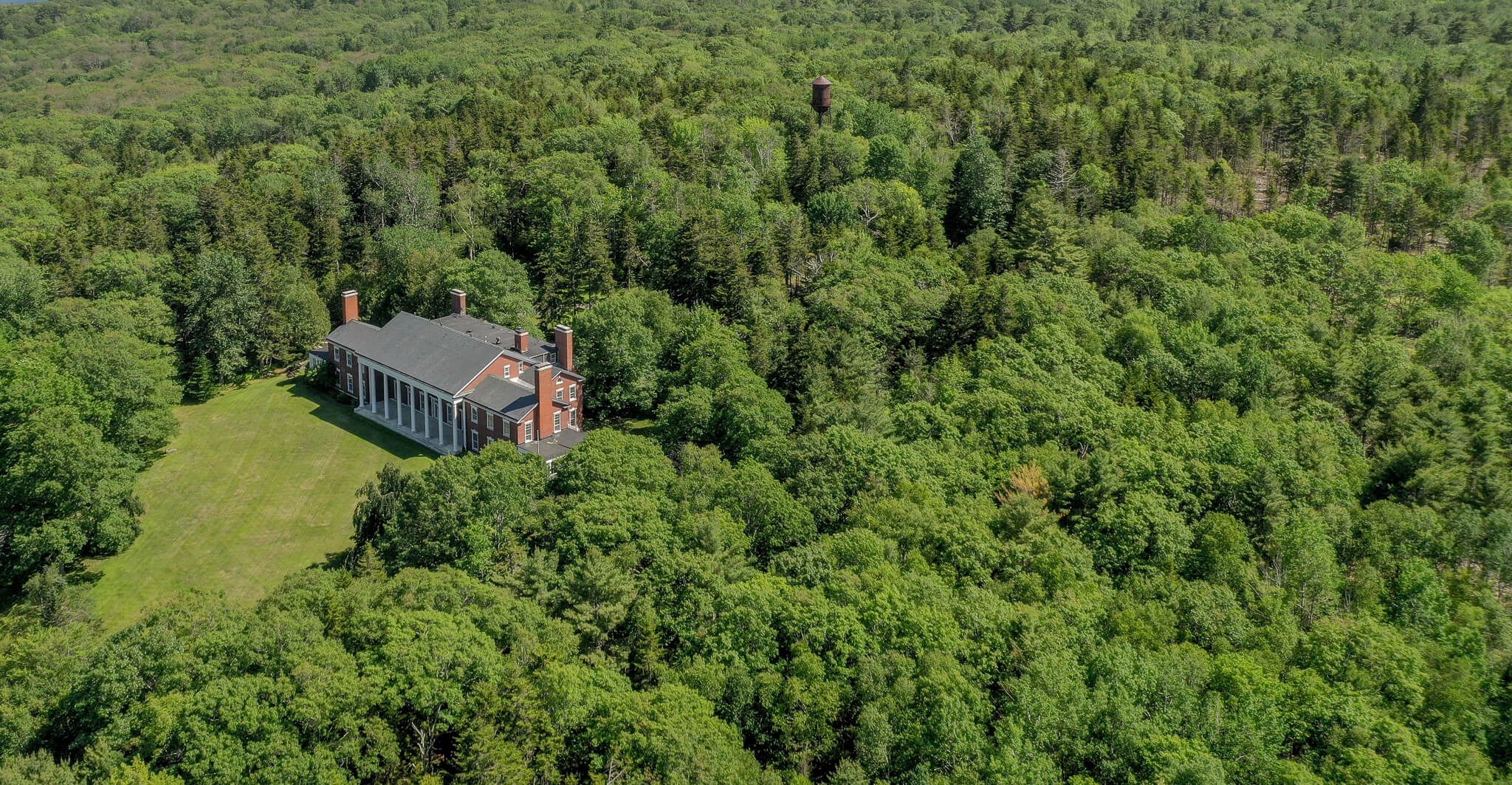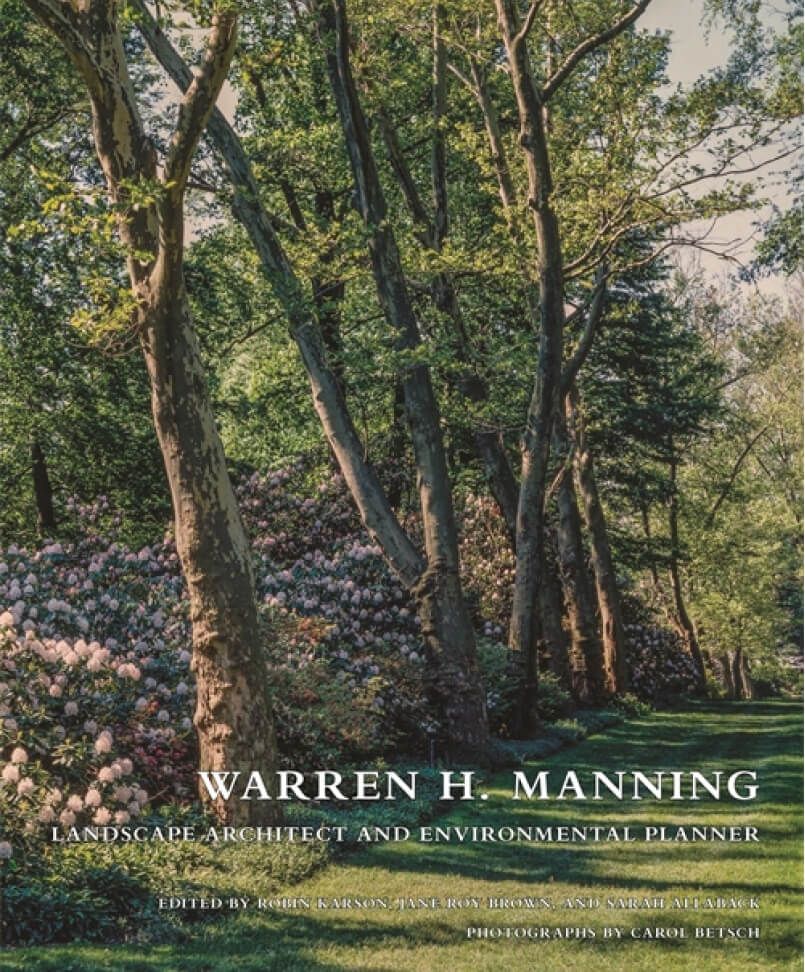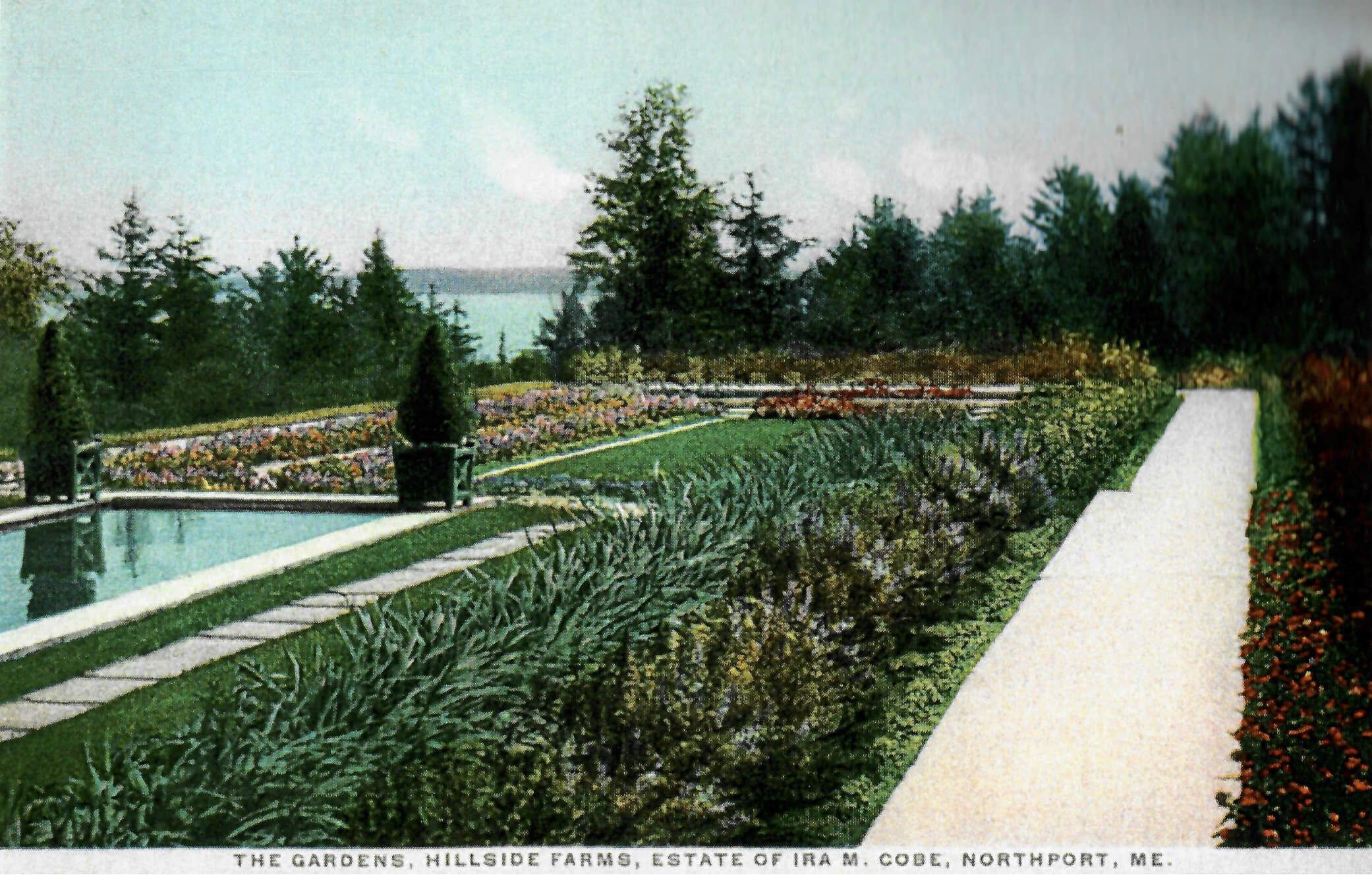Grounds
The grounds of Oak Hall were designed in 1912 by Warren H. Manning, proponent of the naturalistic wild garden approach to landscape architecture. His work lives on over 100 years later as a testament to his vision and the natural beauty of coastal Maine.

Apart from the home itself, the grounds of Oak Hall set it apart as a world class estate. Before Marshall & Fox began designing the lavish Colonial Revival mansion, Warren H. Manning, a Boston landscape architect, began to lay out the roads, trails, lawns, and gardens to emphasize the character of the site’s natural environment. Manning took advantage of the boulders on the glacial hill to build stone walls along the drive and a retaining wall for the formal garden. Some giant boulders were left in place as sentinels from the past.
He wrapped the hill in a winding drive that gives a commanding view of Penobscot Bay and exaggerates the height of the mansion’s columns as one approaches from below. Using the rural meadow to create expansive lawns, Manning emphasized the far-off views of mountains and ocean. He used massed plantings of native trees and shrubs – spruce, firs, arbor vitae, rhododendron, viburnum, spiraea, and honeysuckle – to provide definition and privacy. And the formal gardens close to the house provided beautiful detail and color.

Wild Gardens
Manning’s penchant for the picturesque can be seen all around the estate. The built environment merges on the periphery with the New-England Acadian forest biome which Oak Hall calls home.
The woodland is home to countless species of oak, syrup producing maple, wild blueberries, and a wide variety of wild fern. Over ten miles of original, rustic walking trails are slowly being reclaimed by the present owners.
The Estate includes the original water tower — now a local navigational landmark — once used to ensure proper water pressure for Oak Hall’s extensive plumbing system.Warren H. Manning

Warren H. Manning and his firm were responsible for the conversion of what was Hillside Farm in Northport, into the picturesque grounds of today’s Oak Hall.
Manning’s work on the grounds began even before construction of the residence and lasted through the late 1910s.
Born in 1860 in Massachusetts, Manning would spend over a decade working for notable American landscape designer Frederick Law Olmsted. He went on to establish his own firm, where he developed a distinct style — largely inspired by 18th-century English romanticism, but adapted to the American landscape, resulting in sprawling, natural designs, littered with native plants.
Manning would go on to found the American Society of Landscape Architects and was an early proponent of the National Park System.
The Sunken Garden
Of the major foundational elements of Manning’s original design, only the formal sunken garden and reflecting pool are no longer extant.

They were replaced with an outdoor pool by the Pingree family in the 1950s. Today, echoes of the formal garden remain in the cedar hedges that stand thirty feet tall and surround a small Knot garden that sits in its place.